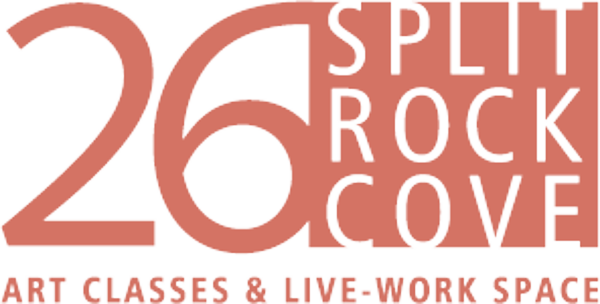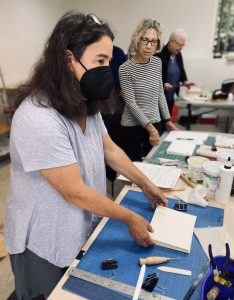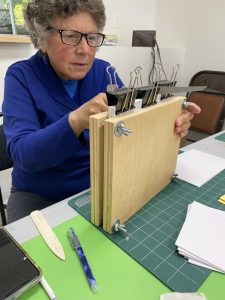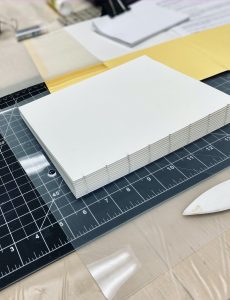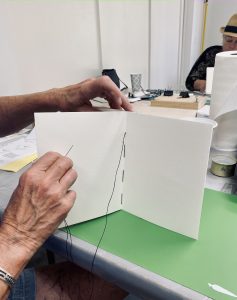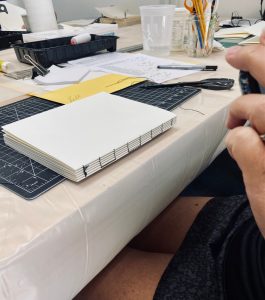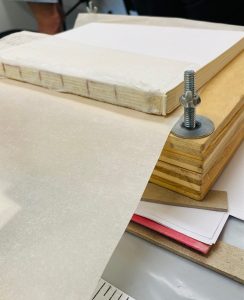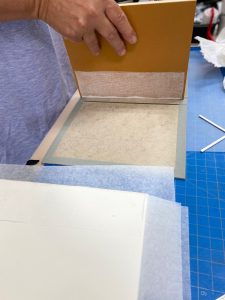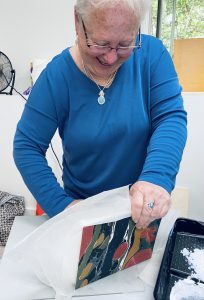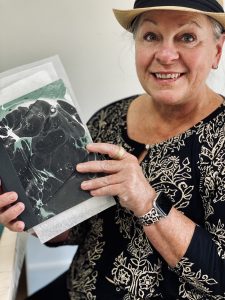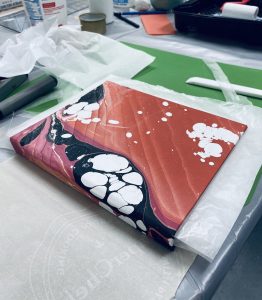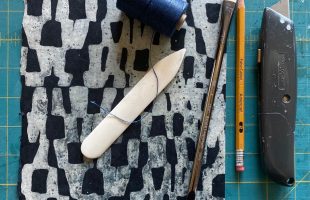
Books and How to Contain Them was the theme for the annual Book Arts Intensive at 26 Split Rock Cove.
We had a terrific start with artist Cindy McGuirl teaching the group of 8 book makers how to make a Hardbound Book – a traditional binding that many of us are familiar with, but very few us have made in our lives.Cindy teaches the best hardbound book workshop that I have ever participated in !!
For this workshop we used sketching paper of a heavy enough weight for most art mediums in a size that felt both generous and still portable. It all begins with the book block.
A book maker needs to understand the grain of paper. It’s not hard to learn, but it is crucial in making a book that doesn’t warp. Folding the paper into folios along the grain is a lesson that has become ‘ingrained’ to me (pun intended), as I’ve ruined a couple of books along the way in 20+ years of making artist books. One folio is slid inside another making it a signature. Several signatures make a book block.
Next comes stitching the book block. The stitching must unite the signatures into one cohesive set, true for all books. Cindy’s method for making a professionally aligned series of stitching stations along the spine, is to use a press to hold the book block and a saw to make the holes.
For some bookmakers this is a quiet, rhythmic, meditative part of the process. Others grumble a bit with the need bring the pages into a taut, precise whole. Some pull the threads too tight and tear pages, others too loose creating a floppy book block. All I can say is that it depends on your personality and how much you practice.
Once done, the spine is glued and covered with a stiff mesh, called mull. Then end papers are tipped in with glue along the spine edge of the book block.
Using book board, book cloth, or decorative papers we then make the book cover. The only tricky part here is making a perfect corner. Cindy has some nice tricks here to create a beautiful corner with no gaps and no pointy edges!
Casing in – or gluing the book block to the cover – is the last step. Each step of the way the book maker is trying very hard for edges to be lined up and for the book to be squared and to lie flat. Little mistakes can make a big difference in the final product. Of course, the charm of a handmade book is often those little places where you can see the ‘hand’ of maker in action.
Everyone was so pleased with how their books turned out. I hope you agree!
